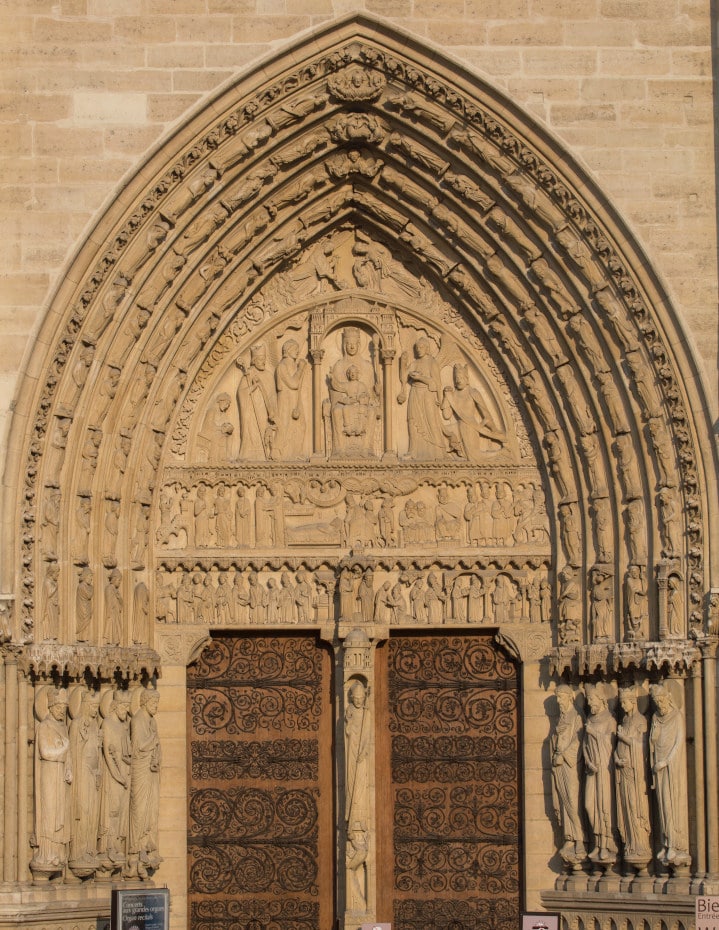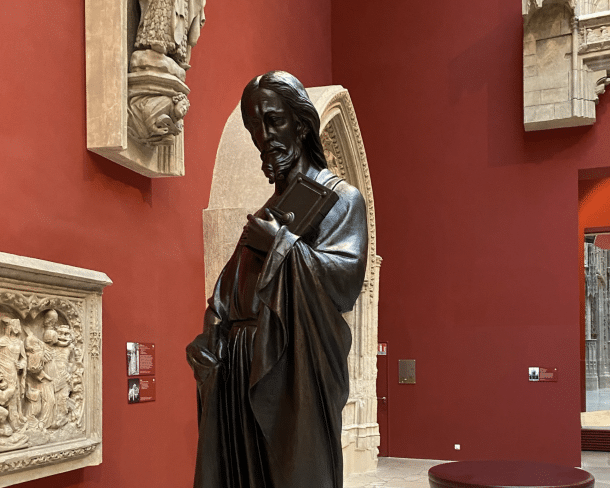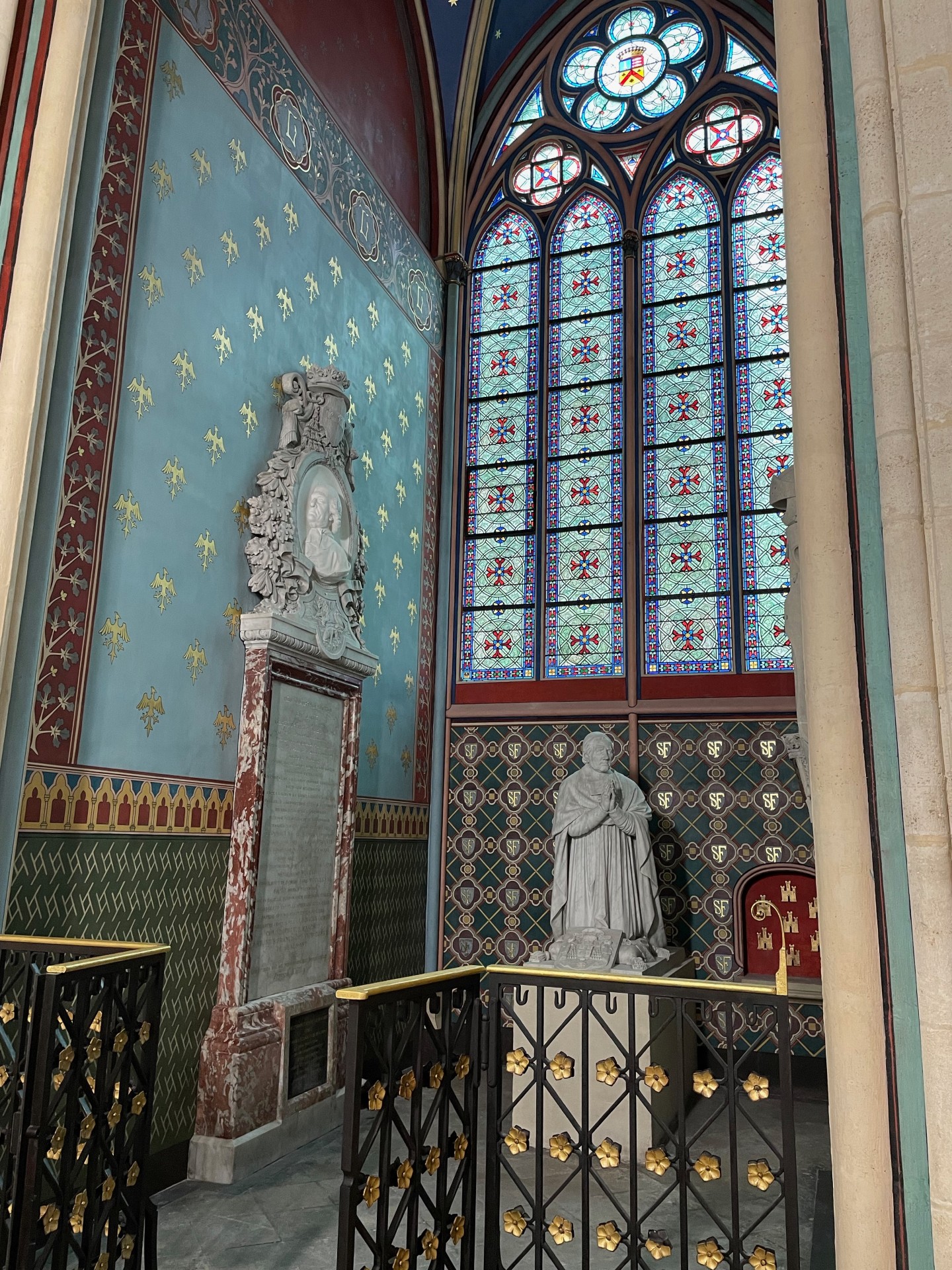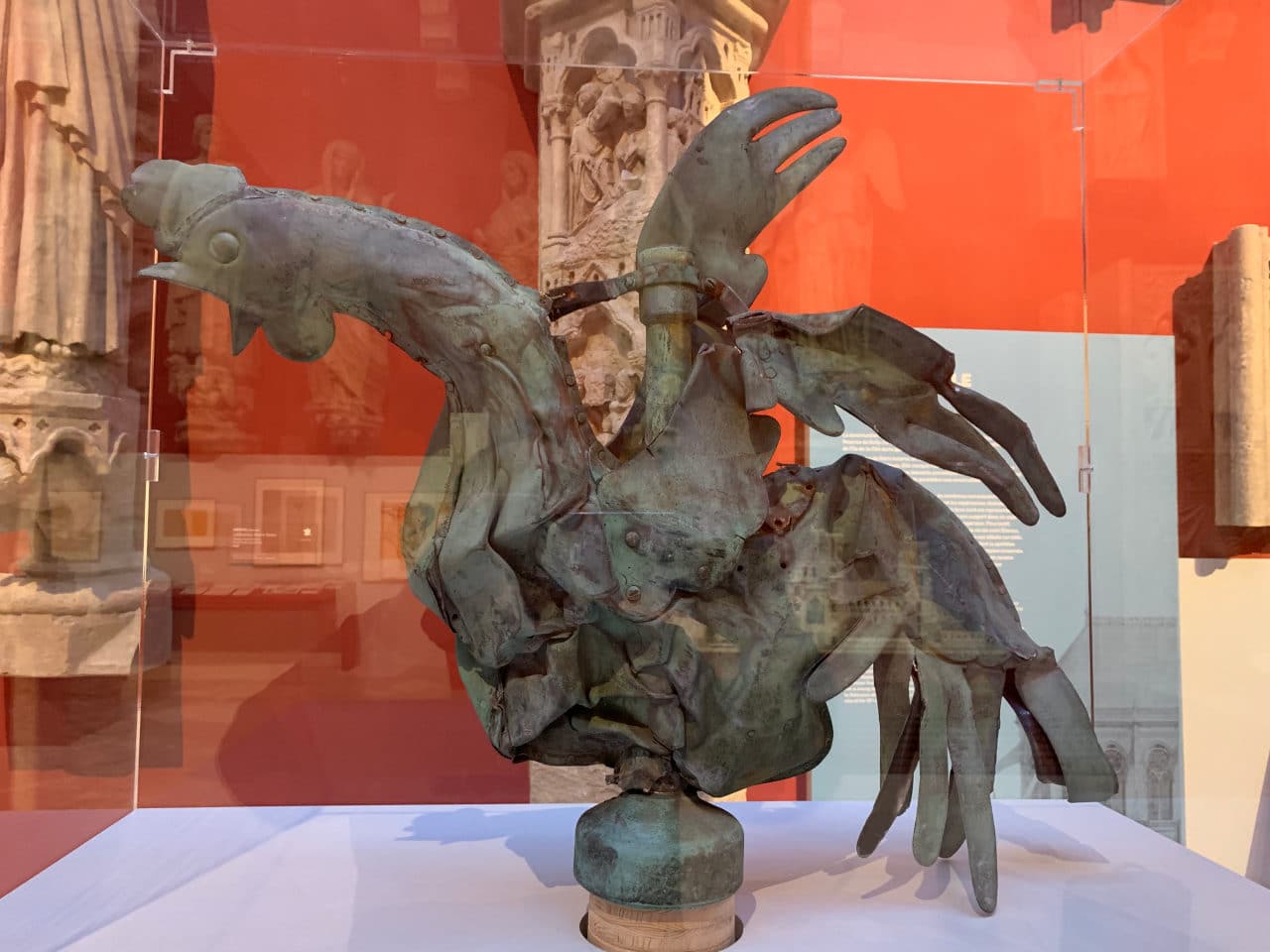Located on the right side of the west façade, the Saint Anne portal is the oldest of the three portals, installed around 1200. It depicts episodes from the childhood of Christ. In the center, the Virgin and Child are flanked by the King of France and the Bishop of Paris, a testament to the close ties between royalty and Christendom.
The Saint Anne portal is in the Romanesque style, and in fact some carved pieces in the portal were recovered from a from a tympanum made fifty years earlier for the old Saint Stephen's Cathedral. This is why its Romanesque style seems more archaic compared to the other two portals on the west façade.
The central pillar, between the two doors, represents Saint Marcel, the bishop of Paris in the 4th century. He crushes a dragon, symbol of the plagues afflicting his diocese. The original statue was damaged during the French Revolution and replaced in the 19th century. Nine full-length statues arranged on each side of the two doors were also rebuilt in the 19th century under the direction of Viollet-le-Duc. They represent on the left a king, the Queen of Sheba, King Solomon and Saint Peter; on the right Saint Paul, King David, Bathsheba and another king. The hinges, forged fittings, are an exceptional example of ironwork in the Middle Ages.
This portal is dedicated to Saint Anne, the mother of Mary. Below the tympanum, the two lintels in the lower part represent the marriage of Joachim and Anne (Mary’s parents) and that of Mary and Joseph (the parents of Jesus). The upper part tells of scenes from the life of Christ: The Annunciation (announcement of the angel Gabriel to Mary), the Visitation to Mary (visit of Elizabeth, mother of John the Baptist, to Mary), the Nativity (birth of the Christ in Bethlehem), and Epiphany (adoration of the Three Kings).
Like queens in the Middle Ages, the Virgin and Child stand on a throne, under a canopy, and wear royal attributes: the crown and the scepter. She holds on her knees her son Jesus who blesses the faithful and presents the Book of the Law. This representation of the Virgin and Child is characteristic of the Romanesque style by a frontal, hieratic attitude. This style draws its inspiration from the Greco Byzantine style by the succession of small pleats on the clothing.
The identities of the characters representing the bishop of Paris (on the left) and a king of France (on the right) remain unknown. They could be the bishop Saint Germain and the king Childebert, founder of the abbey of Saint-Germain-des-Prés, who died in Paris in 558. Or they could represent the bishop Maurice de Sully and King Louis VII, the first sponsors of the cathedral. In the concentric arches above the tympanum, the heavenly court (angels, kings, prophets and elders of the Apocalypse) sing the glory of God.



